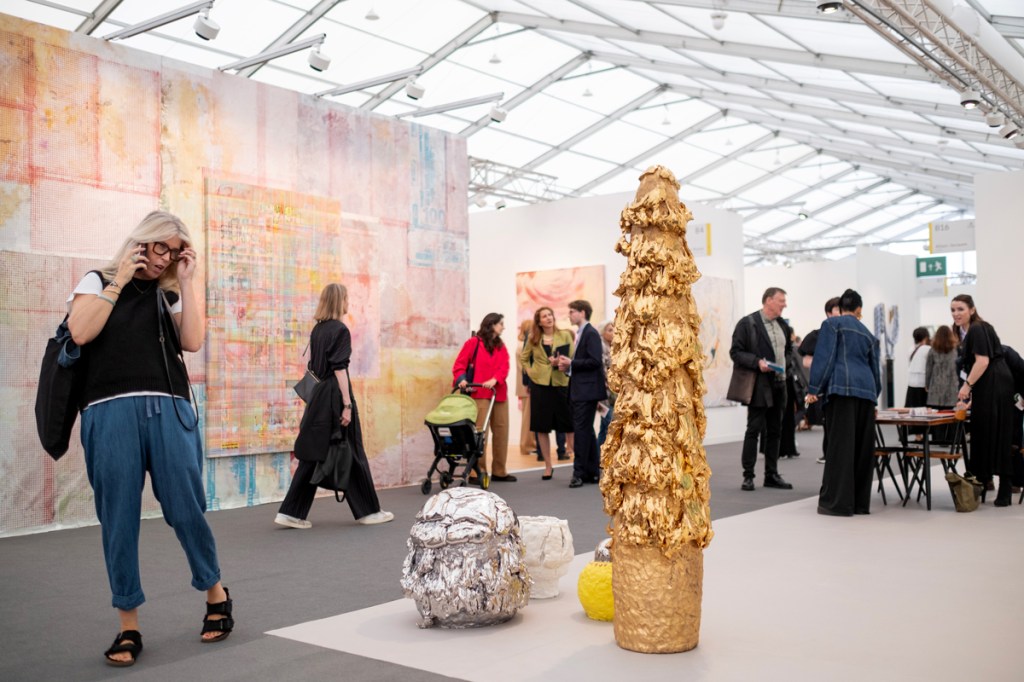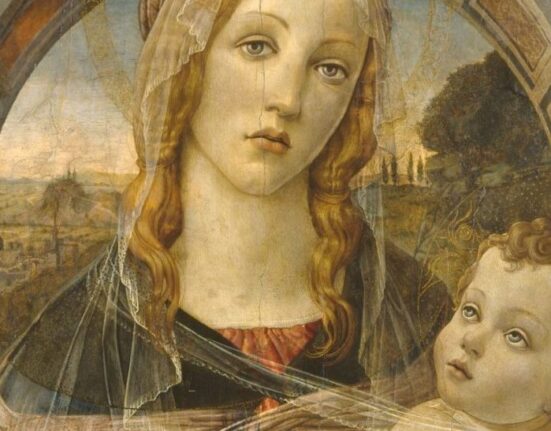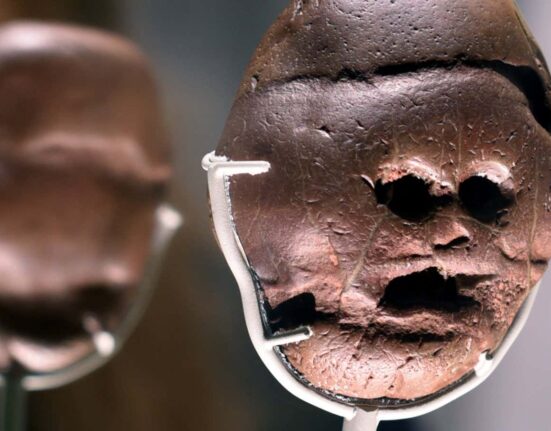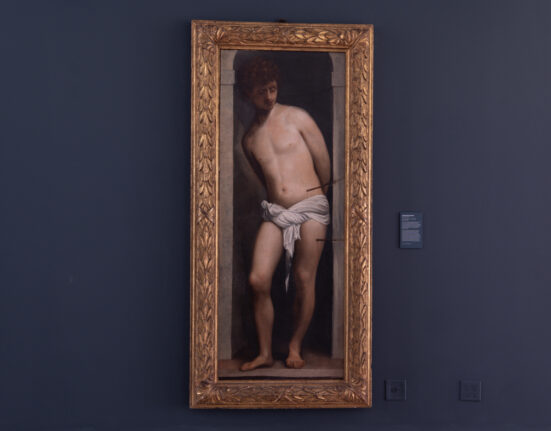
Photo Linda Nylind/Courtesy Frieze London
Two years ago, in the shadow of both Brexit and stringent Covid-19 shutdown policies, London seemed as though it might relinquish its title as Europe’s art world capital to Paris. On the eve of Frieze London’s 20th edition, dealers and analysts told ARTnews that such worries are unfounded: London is still second only to New York for art commerce and, while Paris may be the plat du’jour, the U.K. still rules the European market.
More importantly, some say that trying to measure one city’s importance against another may no longer be relevant.
“You have to remember, in London, like in New York or Hong Kong, the primary market is very international,” art dealer Thaddaeus Ropac told ARTnews. “It’s really driven by collectors’ interest.” Access to the primary market, Ropac said, is a privilege that even the wealthiest collectors have to work for. They have to build relationships with dealers and artists in order to make the years-long waitlists that some artists accrue. “Because of this internationality, it often doesn’t matter where the exhibition might be, or where the collector lives. The city in which you do a show doesn’t necessarily reflect the market there.”
Ropac pointed to his gallery’s current show “Stupor,” by the German artist Daniel Richter. The show, inspired by Hanns Eisler’s song “Nightmare” from Hollywooder Liederbuch, features Richter’s inventive approach to painting the human form. Ropac forsees no problems selling out the show, which opened Tuesday and runs through December 1.
“They will sell because there are collectors who are very interested in his work and a long waitlist. That the show is in London says nothing about London or Paris or anywhere,” he said, adding that often an artist’s preference determines where a show is held or to whom work is sold. Such details make gauging any given city’s market murky at best.
In London, however, Brexit and the new laws and requirements that came with it have thrown some decades-old art dealing businesses for a loop.
“There are definitely challenges in London, especially for older, well-established galleries because the cost of doing business has gone up so much since Brexit,” dealer Phillida Reid told ARTnews. Reid’s eponymous gallery in Bloomsbury, a neighborhood in London’s West End home to the British Museum, is currently exhibiting “The Life Cycle of a Flea,” a show of new works by Prem Sahib. Bloomsbury’s Herald Street is teeming with new galleries and young enterprising dealers, according to Reid, who have brought “a real ripple of positivity” to the city’s scene. New galleries include Union Pacific, Brunette Coleman, and aSquire; Reid opened there last year and well-established gallery Hot Wheels Athens will open in November.
The new galleries opening now have adapted to the post-Covid, post-Brexit environment because that’s all they’ve ever known. Older galleries, however, have struggled with the new rules, dealers said. In a January report, the House of Lords Communications Committee warned that governmental complacency toward the hardships faced by the creative sector had the potential to jeopardize the sector, recommending adjustments to tax policy to alleviate the burden on small and medium enterprises.
The new environment has created the need for workarounds. Stuart Shave of London’s Modern Art gallery is set to open a space in Paris this month and elsewhere, both to expand its footprint in Europe and to ease the difficulties introduced by the pandemic and Brexit. Meanwhile, Robbie Fitzpatrick, formerly of Freedman Fitzpatrick in Los Angeles, Chicago-based dealer Mariane Ibrahim, the Italian galleries Massimo De Carlo and Galleria Continua, and former Hauser & Wirth Asia director Vanessa Guo (along with Jean-Mathieu Martini), have all opened spaces in Paris in recent years. The deluge of exhibition spaces prompted the New York Times Style Magazine to say in 2022 that Paris was at long last recapturing “the energy and excitement” of its illustrious 1920s heyday.
But the pomp surrounding Paris hasn’t translated into market share, yet. This year’s Art Basel/UBS Art Market Report found that the UK’s share of the market is up slightly from 2022, at 16 percent, compared to 8 percent for France.
“The Parisian renaissance is a positive thing, but it doesn’t automatically affect London,” Ropac said. “Paris may be more fashionable this season, but London still has a critical mass of institutions, museums, and artists who have no intention of moving.”
On the other hand, the UK market had been in decline until 2020, bringing in only $456 million that year, its lowest level since 2009. The market has rebounded since. In 2022, the UK saw a 10 percent growth in revenue compared to 2021, buoyed by strong sales at auction, the most impressive of which was Magritte’s L’Empire des Lumières (1961), which sold for $79.7 million at Sotheby’s, marking a new record for the artist’s work.
“Of course with the launch of Art Basel’s Paris+ last year and major international galleries establishing outposts in Paris, there is a lot of momentum in that market, primarily though from the gallery sector,” Drew Watson, who serves as Head of Art Services at Bank of America Private Bank, told ARTnews. The auctions sector, however, according to Watson, remains “still fairly small and focused on niche properties collected by French collectors.”
While Watson sees Paris as a growth market and New York still in the top position and growing, he expects London to simply tread water, given the downward trajectory of the pound sterling and its current high inflation rate.






